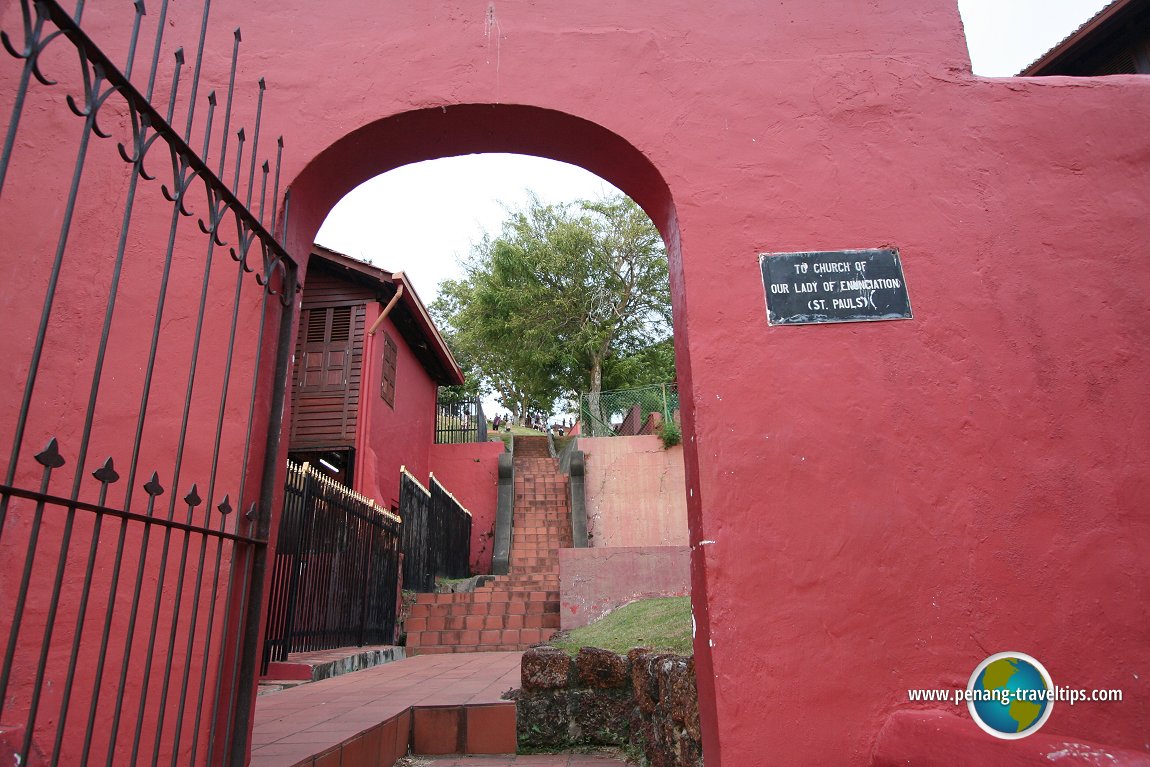 Stairs leading up to St Paul's Hill, Malacca (1 May, 2009)
Stairs leading up to St Paul's Hill, Malacca (1 May, 2009)
St Paul's Hill (GPS: 2.19249, 102.24934; Malay: Bukit St Paul) is a hillock within the historic city of Malacca. It has been known by different names through history. In earliest records, the hill was known simply as Bukit Melaka, or Melaka Hill, shortly after the founding the the town by Parameswara.
Prior to the founding of Melaka, the estuary of the Malacca River was already inhabited by natives known as Orang Selat. After Parameswara arrived at the area and decided to found the settlement, the Orang Selat were allowed to reside around the hill. What we know of this period of time was sketchy, as the Malay Annals (Sejarah Melayu) made no mention of Melaka at the turn of the 15th century. The earliest details were from Chinese records, specifically the chronicles of Ma Huan (Traditional Chinese: 馬歡, Simplified Chinese: 马欢, Pinyin: Mǎ Huān), who was a senior aide to Admiral Zheng He and had followed him on his voyages.1
Updates on St Paul's Hill
10 June, 2017: The Star (Secret tunnel found in historical site) reports the discovery of a secret tunnel linking St Paul's Hill to St John's Hill. This confirms what archeologists have always belived.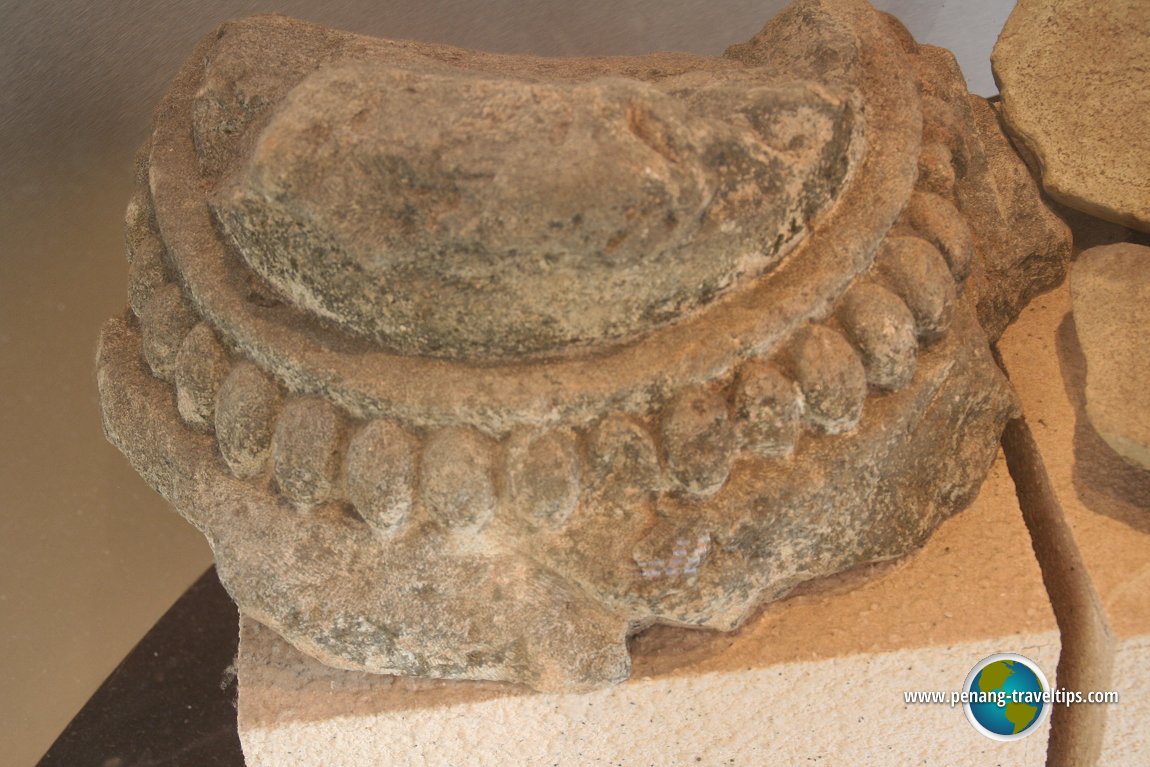 Archaeological artefact discovered at the site of the Malay Sultanate Palace on Melaka Hill (19 July, 2009)
Archaeological artefact discovered at the site of the Malay Sultanate Palace on Melaka Hill (19 July, 2009)
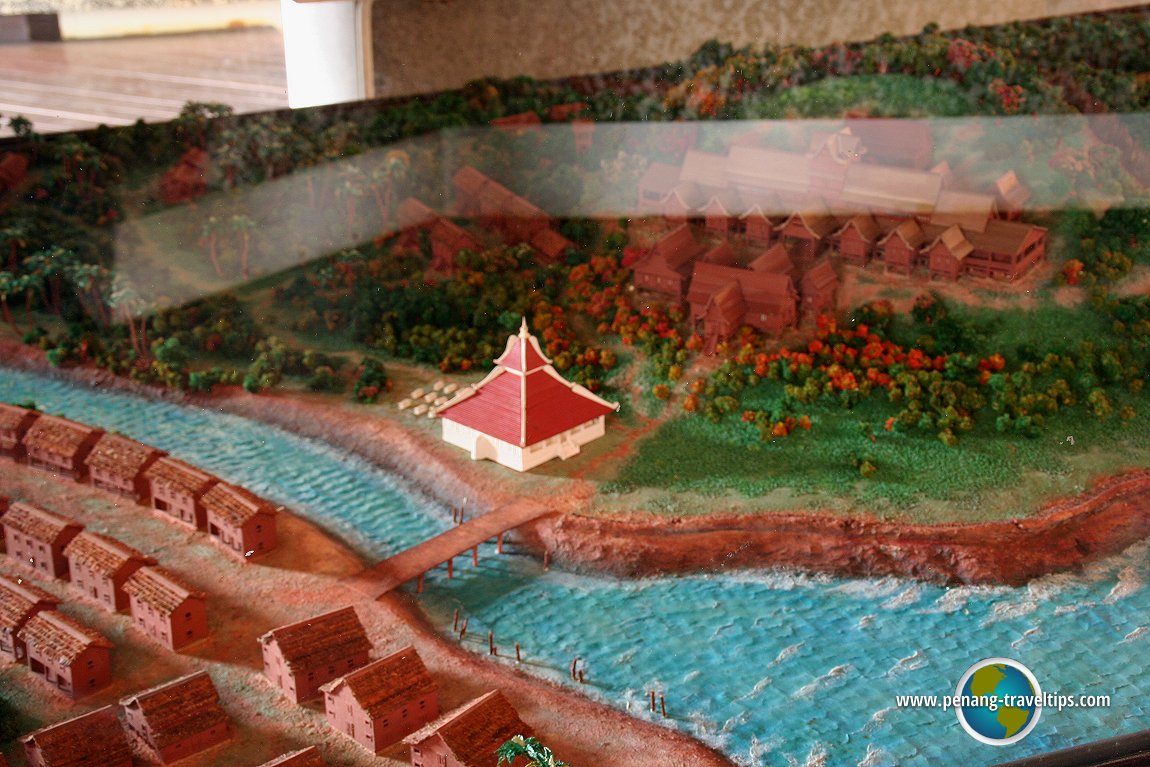 Bukit Melaka miniature (19 July, 2009)
Bukit Melaka miniature (19 July, 2009)
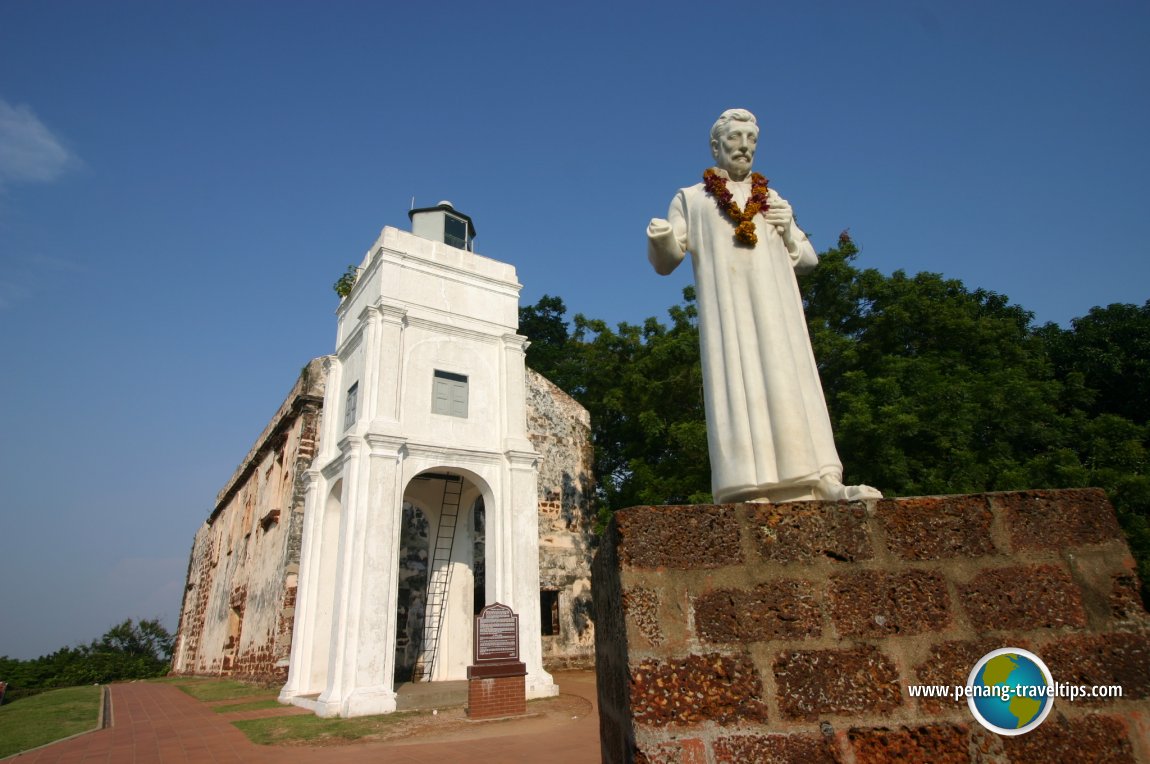 Statue of St Francix Xavier and the ruins of St Paul's Church on top of St Paul's Hill (9 July, 2005)
Statue of St Francix Xavier and the ruins of St Paul's Church on top of St Paul's Hill (9 July, 2005)
The above miniature is based on interpretation of the Malay Annals and Portuguese records. It shows the settlement of Malacca during the reign of Sultan Mansur Shah (1458-1477). The royal palace complex has a Grand Palace or Mahligai, several smaller palaces, audience hall (balairong seri) and other royal quarters. There is a path connecting Bukit Melaka to Bukit China. The entire royal palace grounds were forbidden to commoners.
There was a school established by Francis Xavier on the hill. Now no longer extant, the school was next to the church. During the Dutch administration, the walls around town was further strengthen, and a moat dug that effectively turned St Paul's Hill into an island.
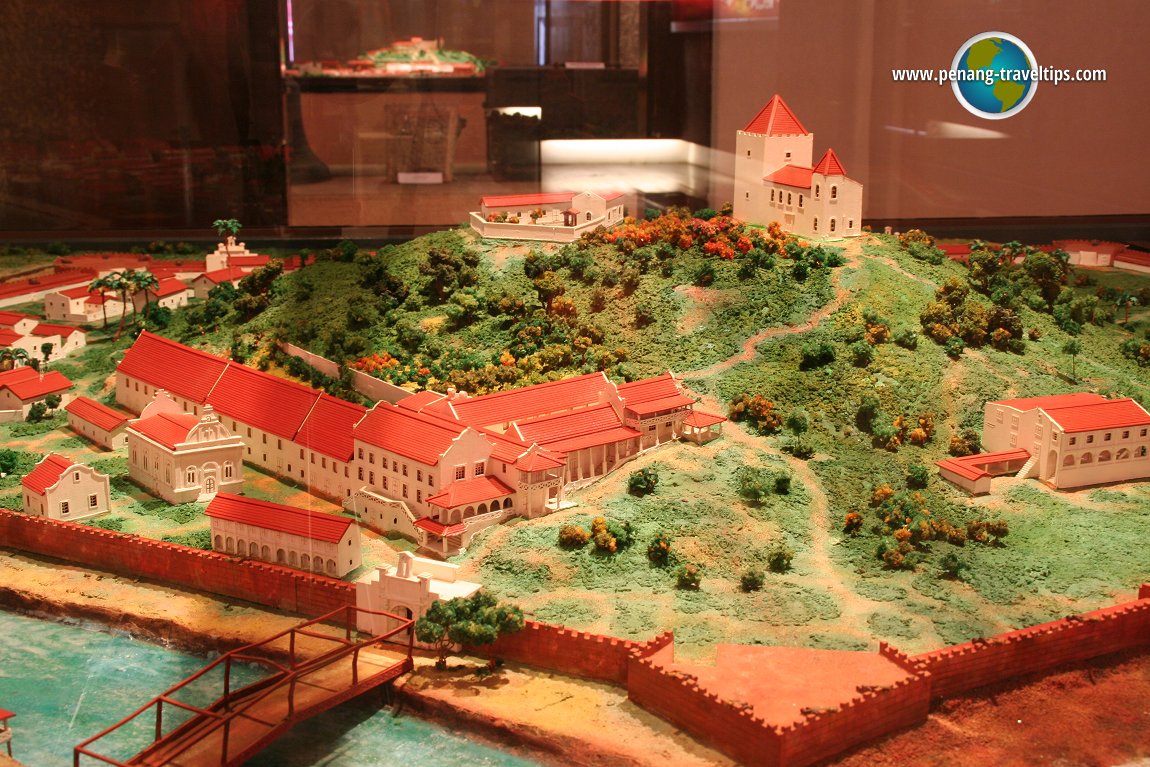 Miniature of St Paul's Hill under the Dutch (19 July, 2009)
Miniature of St Paul's Hill under the Dutch (19 July, 2009)
The above miniature shows St Paul's Hill in the 1740's, when Malacca was under Dutch administration. After taking over Malacca, the Dutch renamed the hill St Paul's Hill, after the church Baquit St Paulo, which occupies the former Madre Deus church of the Portuguese. After that, the Dutch began construction of the Stadthuys. They also built houses lining the southern foot of the hill. These houses are still standing today and are occupied by various museums.
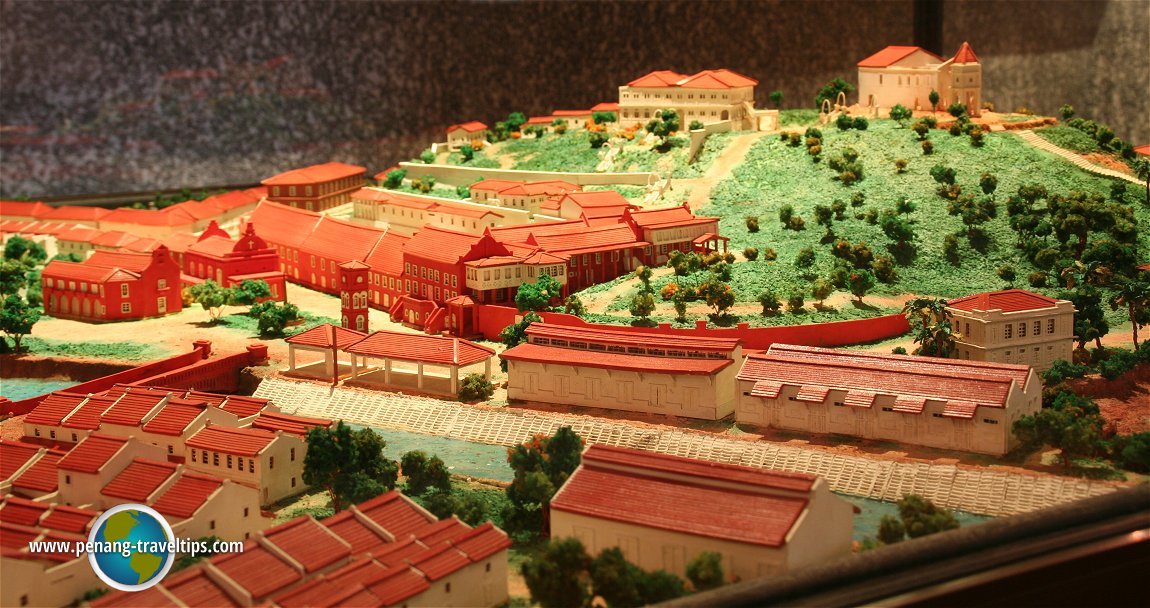 Miniature of Malacca under the British (19 July, 2009)
Miniature of Malacca under the British (19 July, 2009)
The above miniature shows St Paul's Hill in the 1930's, when the town was under British administration. For a while, the British attempt to rename St Paul's Hill to Flag Hill, similar to Flag Hill or Bukit Bendera in Penang. But the name never caught on, and even in Penang, Flag Hill is better known as Penang Hill.
St Paul's Hill is  on the Map of Malacca
on the Map of Malacca
Resources
1. History & Ethnography Museum, MalaccaDiscover Malacca; list of Hills in Malacca and Hills in Malaysia
 Map of Roads in Malacca
Map of Roads in Malacca
 Latest updates on Penang Travel Tips
Latest updates on Penang Travel Tips

Copyright © 2003-2025 Timothy Tye. All Rights Reserved.

 Go Back
Go Back